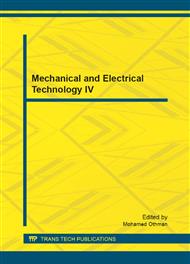p.1866
p.1870
p.1874
p.1878
p.1882
p.1886
p.1891
p.1895
p.1900
Modeling Method Based on Subspace Identification for Lime Kiln Calcination Process
Abstract:
To deal with the modeling problem of the lime kiln calcination process, we propose a model describing the relationship between process states and outputs. By analyzing the strongly coupled features in the process, we construct a relationship model using subspace identification method which takes two inputs including the second air flow and gas flow, and two outputs including the calcining zone temperature and kiln tail temperature. The simulation shows that this model is of high accuracy for describing the characteristics of lime kiln calcination process.
Info:
Periodical:
Pages:
1882-1885
Citation:
Online since:
November 2012
Authors:
Keywords:
Price:
Сopyright:
© 2012 Trans Tech Publications Ltd. All Rights Reserved
Share:
Citation:


